A 5-Step Routine To Wash Your Hair Less
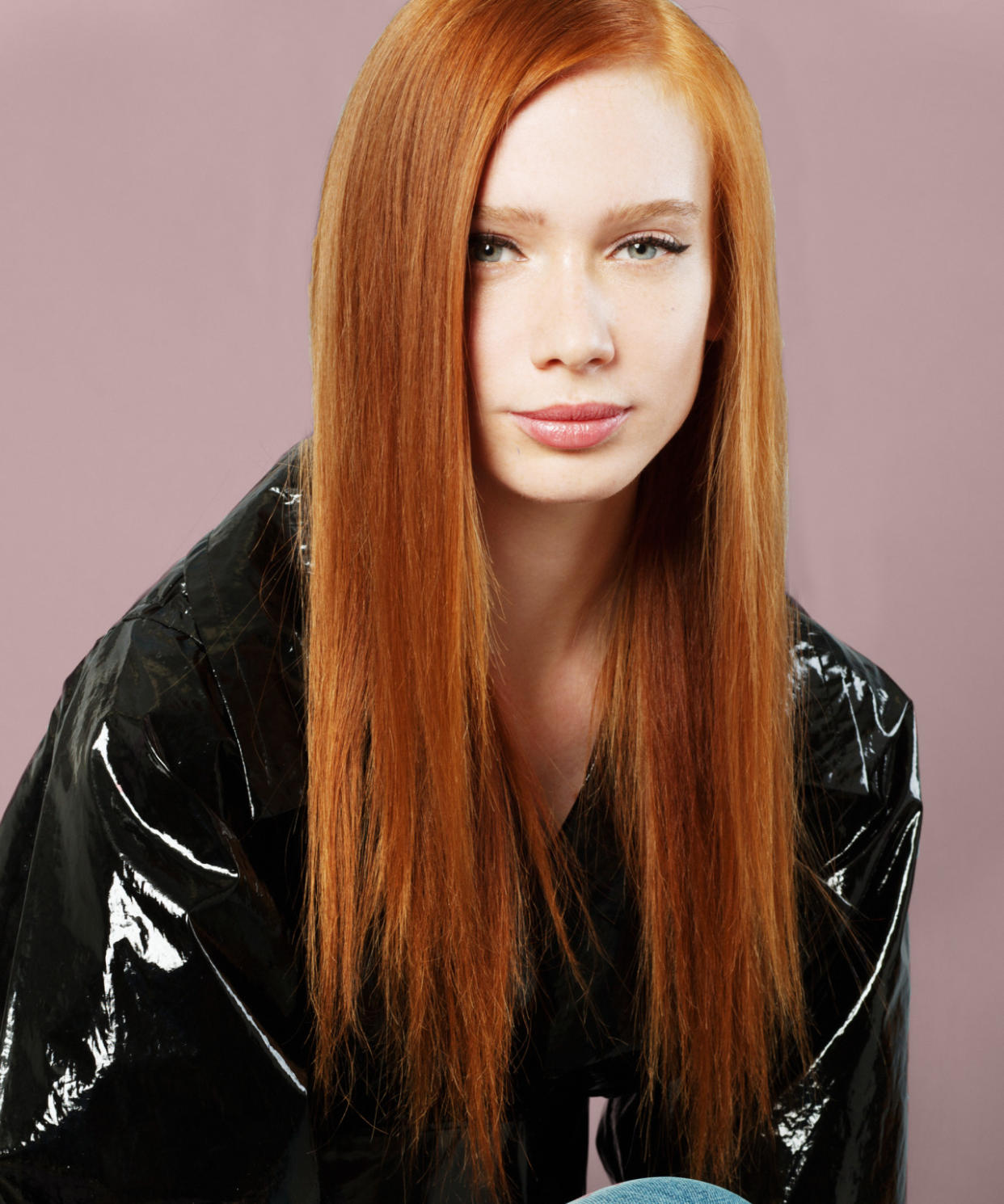
Photo by Brianne Willis.
The idea of training your hair to be less greasy may seem like a bit of a farce, for obvious reasons. Namely, the fact that your hair is not alive and the amount of sebum that is created at your scalp can be heavily reliant upon your diet, genes, and various other factors. But there is a reason why this topic is oft-discussed — it’s because there’s actually some truth to it.
Related: This Is What Female-Directed Porn Looks Like
No surprise here: Having to lather up every day is not ideal for many of us, especially when lived-in texture and easy-to-copy updos are so en vogue. (And yes, the majority of us want extra sleep and an “I just woke up like this” moment every so often.)
While you cannot train your hair to do much of anything in the traditional sense of the word, you can train yourself to adopt a few key modifications. That is, things that can help reduce the buildup of oil, distribute the oil that you are creating, and avoid the products that are doing more harm than good in this universal quest for fewer wash days. Spoiler alert: You’re using that dry shampoo completely wrong.
Related: Everything You’ve Ever Wanted to Know About Lip Injections
For pro guidance, we consulted a few Hollywood red-carpet hairstylists for exactly what they tell their celebs clients. (Celebs like Jaime King, Gwyneth Paltrow, and Jenny Slate, to be exact.) Ahead, a five-step pro-approved technique that can help you squeeze more days between washes — without having to look like you dunked your head in a deep fryer.
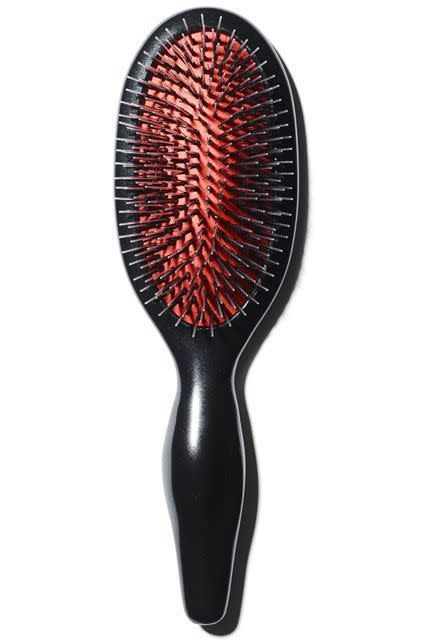
Step 1: Distribute Oil Like A Pro
The first thing to know is that oil, especially on the scalp, is not the enemy. (Let’s stop the sebum hate.) In fact, the oil on your scalp helps to keep the rest of your hair healthy and well-moisturized — if you let it.
Before beginning this process, gently brush through your dry locks with a real boar-bristle brush (and no, it doesn’t have to be a fancy Mason Pearson — any brand will do), which will distribute the natural oils from your scalp through the length of your locks — and if you’re lucky, down to your ends, depending how long your hair is.
Related: The Craziest Beauty Routines of the Rich & Famous
Start at the roots — you can detangle first, if necessary — and use fluid strokes to help the oil travel down the shaft of your hair.
This has a few benefits: The oil will wash away more throughly from the roots when you shower, it will prevent the buildup that can cause you to need to wash more frequently, and it will naturally condition the more-fragile length and ends of your hair, celeb hairstylist Nikki Providence says.
Related: What Going Paleo Did To My Body
Bonus tip: This technique is also very helpful to repeat on dry hair before going to bed. Not only will the evening brushing help to make your morning easier (less bedhead and knots), but it will also prevent the buildup of oil on the scalp overnight, allowing you a better chance of skipping a shampoo the next morning.
Try: Sonia Kashuk Hair Brush, $15.79, available at Target.
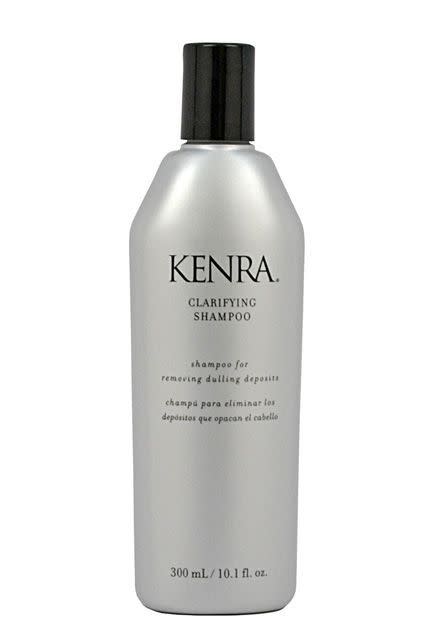
Step 2: Pick The Right Shampoos (& Use ‘Em Correctly!)
For the next step, we looked to celeb hairstylist Derek Yuen, who puts his clients on a very specific product regimen if they want to cut down on oily roots. Day one includes wiping the slate clean. (Remember to brush first, of course.)
“I first ask them to [clean] with a strong clarifying shampoo, like the formula from Kenra,” he says. “This will get rid of almost all buildup in one wash and is safe for color-treated hair.”
Related: Color-Changing Makeup? Yes, plz.
He reminds us that it should only be used once a week on very oily hair or every other week for all others. Even once a month is okay — just feel out how well it works on your hair, he says.
This is a bit like hitting reset on the scalp — just don’t overdo it. “It’s possible that over-cleansing your hair is causing your scalp to over-produce oil to compensate for the stripping effect of shampoo,” Providence says. “This locks you into a cycle of washing your hair frequently.”
Therefore, the rest of the time, stick to a very gentle shampoo, that’s free of silicones and oils, and don’t forget to brush before lathering up. Anything formulated for fragile hair or marked with “gentle” on the label should work well — and don’t dismiss baby shampoo, it’s incredibly gentle and affordable.
Try: Kenra Professional Clarifying Shampoo, $13, available at Ulta Beauty; Bumble and Bumble Gentle Shampoo, $25, available at Bumble and Bumble.
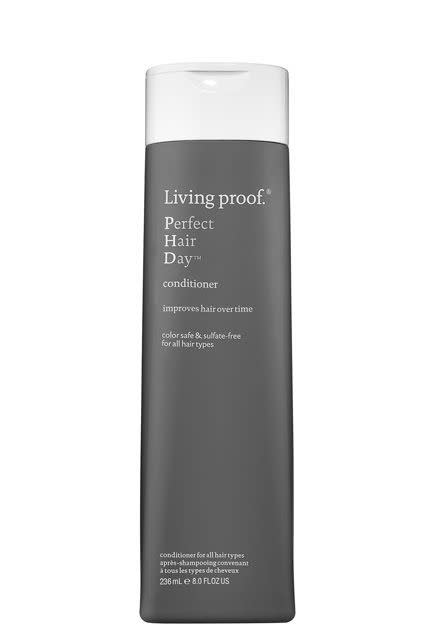
Step 3: Go Easy On The Conditioner
Next, condition just your ends with a light conditioner free of silicones and oils (which is actually much harder to find than you may think; Living Proof’s formula checks all those boxes). Even though your now-squeaky-clean strands may feel like they need extra moisture, keep it light to avoid buildup. Read: Don’t let your conditioner touch your scalp or the hair near your scalp.
Providence reminds us that over-washing oily hair can lock you into a cycle that actually creates more oil due do this feeling of dryness. “To make it worse, you wind up using heavy conditioners, because all this washing can strip your hair of its moisture,” she says.
Related: Luxe Lashes Are One Click Away
And there’s more: “Using a heavy conditioner on or near the scalp can cause little breakouts and irritation, which inflames the hair follicle and causes more oil to be created,” Yuen adds.
If your hair is feeling dry through this process, be sure you mask for extra moisture on an off day; just stick to the bottom half of your hair.
When it comes to picking styling products, be absolutely sure they’re free of silicones and oils, Yuen says, because they travel up the hair.
“Especially avoid silicones, because they need detergent to be properly removed from your hair,” he says, which means your new everyday gentle shampoo isn’t going to be able to wipe them clean.
Applying to just the ends won’t cut it, either. Think of it like this: If you dip the end of a paper towel into a bowl of water, the liquid eventually travels up the sheet. The same thing happens to your hair, whether from touching your hair or just slowly moving around. Look for products clearly marked silicone- and oil-free.
Living Proof Perfect Hair Day Conditioner, $25, available at Sephora; Christophe Robin Purifying Hair Finish Lotion with Sage Vinegar, $48, available at Sephora.
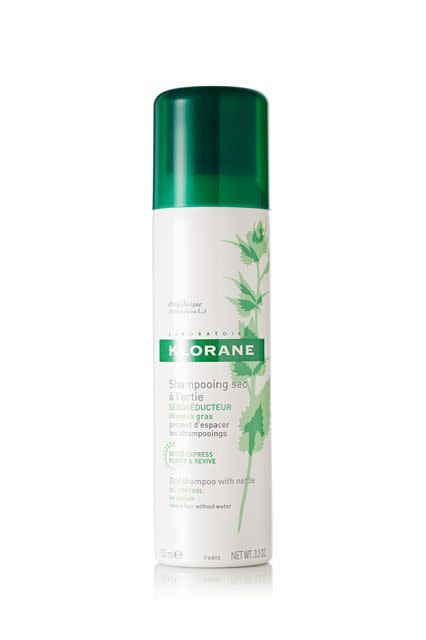
Step 4: Apply Dry Shampoo Early…Or Not At All!
Clarifying regularly, distributing oils before washing and bed, and picking the right products can effectively allow you to skip days between washing. But for extra security, you can also add a dry shampoo into the mix. Just make sure you do it the right way.
“By the second or third day, it’s already too late to use dry shampoo,” Yuen says. “I always say 'dry shampoo clean hair only,’ because you have to soak up the oil as it comes out, not once it’s already out. By that time, there is already buildup; your hair is already too greasy.”
Bonus: Applying dry shampoo to clean hair also helps to add a desirable texture and a touch of volume to roots. It’s a win-win!
Klorane Dry Shampoo with Nettle, $20, available at Net-A-Porter.
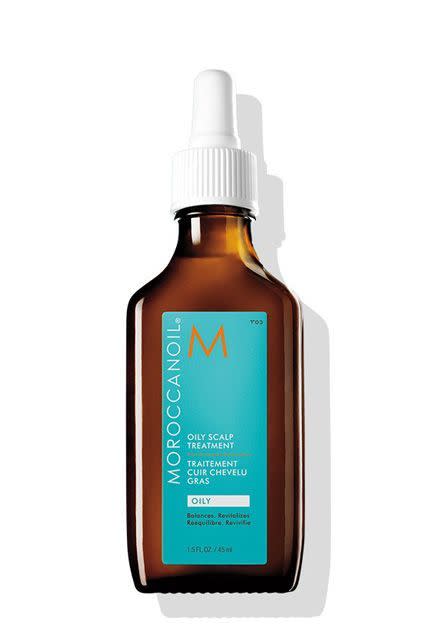
Step 5: Try A Treatment
Our experts say that you should be able to start skipping wash days pretty quickly once you adhere to this schedule, but, “If it doesn’t seem to balance out after a few weeks, this might not be the right thing for you,” Providence says.
If this is the case, you can also try a scalp treatment, which can be applied on a non-clarifying day during your week, or as needed. You can read all about how the right one can be a godsend or simply opt for Yeun’s pick from Moroccanoil.
He recommends this formula to his clients to help regulate the oil on the scalp when the aforementioned plan isn’t quite working — and it’s a cinch to use. Create a few parts and massage a few drops into each part. Wait 10 minutes, rinse, then shampoo as needed.
Moroccanoil Oily Scalp Treatment, $44, available at Moroccanoil.
By: Lexy Lesback

